
OTEC: Ocean Thermal Energy Conversion. By: Jackie Rowley. FUNDAMENTALS. 75% of the Earth Covered by water Ocean water stores much more heat than the atmosphere Thermo-haline circulation creates temperature differences throughout Earth’s oceans.

lacey-joyner + Follow
Download PresentationAn Image/Link below is provided (as is) to download presentation Download Policy: Content on the Website is provided to you AS IS for your information and personal use and may not be sold / licensed / shared on other websites without getting consent from its author. Content is provided to you AS IS for your information and personal use only. Download presentation by click this link. While downloading, if for some reason you are not able to download a presentation, the publisher may have deleted the file from their server. During download, if you can't get a presentation, the file might be deleted by the publisher.

How can we save energy? Provide services only when and where required at the optimum levels utilizing efficient energy conversion Provide services only when needed Turning stuff off when it’s not required Lights Boilers Cooling towers Air handling units Chillers HVAC systems
1.76k views • 19 slides

The Ocean Habitat An ocean is a large, deep body of salt water. Oceans cover three-fourths of Earth. Different plants and animals live in different parts of the ocean. Parts of the Ocean Tide Pools Kelp Forest Open Ocean Deep Sea Tide Pools
1.49k views • 36 slides
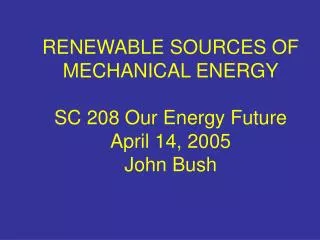
RENEWABLE SOURCES OF MECHANICAL ENERGY SC 208 Our Energy Future April 14, 2005 John Bush WIND, WATER, THERMAL GRADIENTS Hydroelectric Tidal and Ocean/River Currents Wave Wind Geothermal Ocean thermal COMMON FEATURES With minor exceptions they all provide electricity exclusively
926 views • 58 slides

Nontraditional Machining and Thermal Cutting Processes. Nontraditional machining refers to a group a processes which removes excess material by various techniques involving mechanical, thermal, electrical or chemical energy
2.22k views • 67 slides
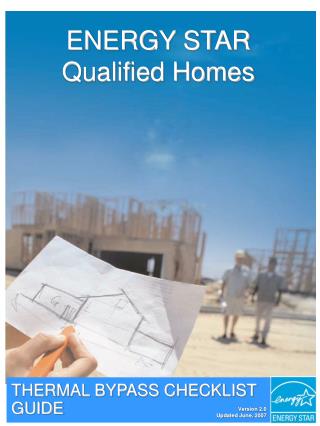
ENERGY STAR Qualified Homes. THERMAL BYPASS CHECKLIST GUIDE. Version 2.0 Updated June, 2007. ENERGY STAR QUALIFIED HOMES. TABLE OF CONTENTS. Thermal Bypass Checklist Introduction 5 General Tips and Best Practices 6 Overall Air Barrier and Thermal Alignment 7
1.17k views • 86 slides

B40b. SEAFLOOR SPREADING. Atlantic Getting Bigger. SEAFLOOR SPREADING. Idea that the ocean bottom is getting larger. Atlantic Ocean Proposed by Harry Hess Evidence in rocks on ocean floor. mid-ocean ridge found running down center of Atlantic Ocean series of mountains on either side.

ENERGY CONVERSION MME9617a Eric Savory www.eng.uwo.ca/people/esavory/mme9617a.htm Lecture 14 – Wind Energy Part 2: Wind turbines Department of Mechanical and Material Engineering University of Western Ontario. Contents Modern wind turbines and their key components
2.35k views • 163 slides

EEE 360 Energy Conversion and Transport. George G. Karady & Keith Holbert Chapter 7 Induction Motors. Lecture 18. 7.2 Construction. Induction Motors. The single-phase induction motor is the most frequently used motor in the world
1.39k views • 44 slides

Chapter 17: Thermal Properties. Thermal Properties. Heat capacity Specific Heat Thermal Energy Mechanism Coefficient of Thermal Expansion Thermal Conductivity Thermal Stresses Thermal Shock Applications where these parameters are significant. Thermal Energy.
1.71k views • 42 slides

10.2 – Thermal Energy Transfer. (pages 375 – 387 in your text). A Blue Planet. Our planet, Earth, has been given the nickname “The Blue Planet”. This is because Earth’s surface is covered with 70% water. . The Hydrosphere.
1.08k views • 34 slides

Metabolism and Energy. Chapters 8. Metabolism and Energy. Organisms are energy transformers!. Metabolism Catabolism Anabolism Bioenergetics Energy Kinetic Heat/Thermal Light Energy Potential Chemical. Metabolism and Energy. Organisms are energy transformers!. Metabolism
1.08k views • 55 slides

Brainpop Underwater World Ocean Floor. Ocean Floor. The Ocean Floor. Oceanographers discovered the shape of the ocean floor by measuring the depth of the floor in many places. Early tools included lead weights lowered on ropes or cables to the ocean floor.
2.18k views • 13 slides

One-Dimensional, Steady-State Conduction without Thermal Energy Generation. Chapter Three Sections 3.1 through 3.4. Lecture 4. Methodology. Methodology of a Conduction Analysis. Specify appropriate form of the heat equation. Solve for the temperature distribution.
1.48k views • 33 slides

Solar 101 Practical Applications of Solar Energy for Residential and Commercial Applications Appalachian State University. Brandon Leavitt 847-677-0950 www.solarserviceinc.com. Solar 101 Overview. Advantages of solar energy Solar thermal technology Residential solar thermal
958 views • 64 slides
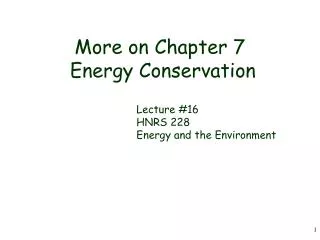
More on Chapter 7 Energy Conservation. Lecture #16 HNRS 228 Energy and the Environment. Overview of Chapter 7. Energy Conservation Space Heating Thermal Insulation Air Infiltration Lighting Appliances Some considerations of agriculture and industry. iClicker Question.
921 views • 74 slides

Thermal Physics. HEAT AND TEMPERATURE. Temperature. Temperature : A measure of how hot (or cold) something is Specifically, a measure of the average kinetic energy of the particles in an object.
1.41k views • 116 slides

Energy Relationships in Chemical Reactions. Energy is the capacity to do work Thermal/kinetic energy is the energy associated with the random motion of atoms and molecules Chemical Potential energy is the energy stored within the bonds of chemical substances.
1.2k views • 77 slides

Energy. Multiple forms of Energy Mechanical Energy Kinetic Energy, E=1/2 mv 2 , velocity dependence Potential Energy, ability to do work, stored energy Radiation Energy Electromagnetic Energy, E=h*frequency Nuclear Energy, conversion of mass to energy Chemical Energy (also food energy)
1.37k views • 45 slides
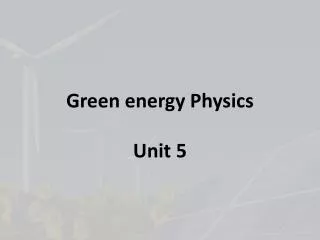
Green energy Physics. Unit 5. Classification. Renewable/ non conventional Non renewable/ conventional. How much solar energy?. The surface receives about 47% of the total solar energy that reaches the Earth. Only this amount is usable. Direct Conversion into Electricity.
1.76k views • 151 slides

Work, Power, and Energy. Energy, Work, and Power. Energy Work Power Conservation of Energy. Energy. The capacity to do work Easy forms of mechanical energy Kinetic Energy Potential Energy Examples of other types Radiant Thermal Internal Unit: Joules (J) – one newton x 1 meter.
11.22k views • 41 slides
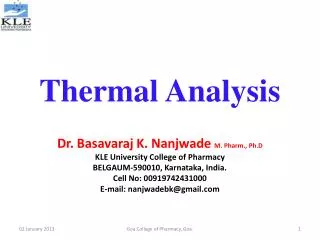
Thermal Analysis. Dr. Basavaraj K. Nanjwade M. Pharm., Ph.D KLE University College of Pharmacy BELGAUM-590010, Karnataka, India. Cell No: 00919742431000 E-mail: nanjwadebk@gmail.com. Thermal analysis.
8k views • 196 slides

The Quantum-Mechanical Model of the Atom. Atoms and Energy. All energy is either kinetic energy (the energy of motion), or potential energy (energy based on position). In chemical systems, thermal energy is of interest as particles move, collide, and exchange energy.
1.73k views • 126 slides